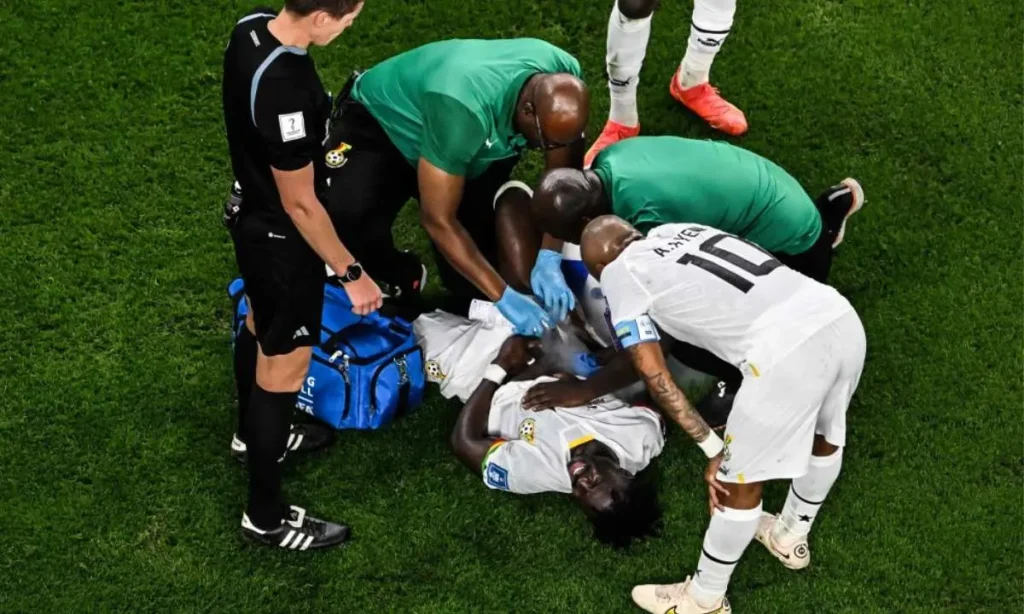What's in the 'magic spray' World Cup players use, and does it really work?

As the World Cup unfolds, viewers often witness a curious scene: a player, agonizing on the ground, suddenly rejuvenated by a quick spray from a team doctor. This "magic spray" evokes both intrigue and skepticism. What exactly is it, and does it hold any real healing powers? Let’s delve into the science and application behind this phenomenon.
- The essence of magic spray in sports
- What’s in the bottle?
- How does magic spray work?
- Temporary relief vs. long-term healing
- Placebo effect and player psychology
- Magic spray use in different sports
- Risks associated with magic spray
- Availability of magic spray for the public
- Conclusion: The reality behind the magic
The essence of magic spray in sports
The term "magic spray" commonly refers to topical sprays used by sports teams to provide immediate relief for players suffering from minor injuries. Most often seen in soccer, this spray has attracted considerable attention for its apparent ability to alleviate pain almost instantaneously.
However, the reality behind these products is far from magical. The sprays primarily serve to cool and numb the affected area, offering temporary pain relief rather than a cure. Athletes rely on these sprays during high-stakes moments when every second counts.
What’s in the bottle?
The composition of magic spray can vary significantly depending on the brand. Generally, the ingredients include:
- Ethyl chloride: A prescription medication that acts as a topical antiseptic and cooling agent.
- Methyl salicylate: A counter-irritant that produces a sensation of hot and cold, commonly found in over-the-counter pain relief rubs.
- Other additives: Some formulations may include additional numbing agents or soothing compounds.
These components work together to provide a brief but effective numbing effect, akin to applying an ice pack to an injury.
How does magic spray work?
According to experts, the primary function of magic spray is to induce a temporary state of numbness in the area of application. Dr. Shane Davis, a physiatrist specializing in sports medicine, explains, “It’s providing a little bit of temporary anesthetic or numbing.”
The immediate cooling sensation can effectively dull pain, allowing players to resume their activities without being hindered by discomfort. This relief, however, is fleeting—lasting just a few seconds to a couple of minutes—yet it can be crucial in a game where time is of the essence.
Temporary relief vs. long-term healing
While magic spray can be beneficial for minor injuries, it is important to note that it does not promote healing. Players often sustain bumps and bruises that do not require extensive medical attention. However, if a player experiences a more severe injury, such as a fracture or tear, the use of magic spray could potentially mask significant damage.
In such cases, medical professionals must assess the situation carefully. Mitch Therriault, a physical therapist at Ohio State Wexner Medical Center, emphasizes that if there is concern for structural damage, the athlete should be pulled from the game instead of relying on the spray. This decision is critical for the long-term health of the player.
Placebo effect and player psychology
The psychological aspect of using magic spray cannot be overlooked. For some athletes, the mere act of using the spray can create a placebo effect, providing them with confidence and reducing their perception of pain. The adrenaline rush that often accompanies returning to play can further diminish their discomfort, making the spray seem more effective than it actually is.
Magic spray use in different sports
While magic spray is a staple in soccer, its use varies across other sports. Some teams choose not to utilize it at all. For instance, the U.S. Soccer Federation has opted against its use, according to a spokesperson. Athletic trainers, like Sam Cervantes from the University of Pittsburgh, note that individual preferences play a significant role. “Some guys actually don’t need it,” he states, suggesting that while some players may find it helpful, others remain indifferent.
Risks associated with magic spray
Though magic spray can be effective, it is not without risks. When applied improperly, the freezing properties of these sprays can lead to skin damage. Athletes with conditions that affect skin sensation or those prone to cold injuries should avoid using these products.
Cervantes advises caution, emphasizing that untrained users could exacerbate injuries or cause additional harm. The best approach is always to use these sprays under the guidance of trained personnel who understand the risks involved.
Availability of magic spray for the public
For those interested in exploring the benefits of magic spray, various versions are available for purchase at drugstores or online. Commonly marketed as "Cold Spray" or "Pain Relief Spray," brands like Cramer and MyDerm offer consumer-friendly options. These sprays can be useful for anyone seeking immediate relief from minor injuries or soreness.
Conclusion: The reality behind the magic
While the term "magic spray" evokes images of miraculous healing, the reality is much more grounded. The sprays provide temporary relief through cooling and numbing, allowing athletes to continue their performance under pressure. However, they are not a substitute for proper medical evaluation and treatment. Understanding the true nature of these products helps debunk the myths surrounding their effectiveness and promotes safer practices in sports medicine.
Interesting Articles